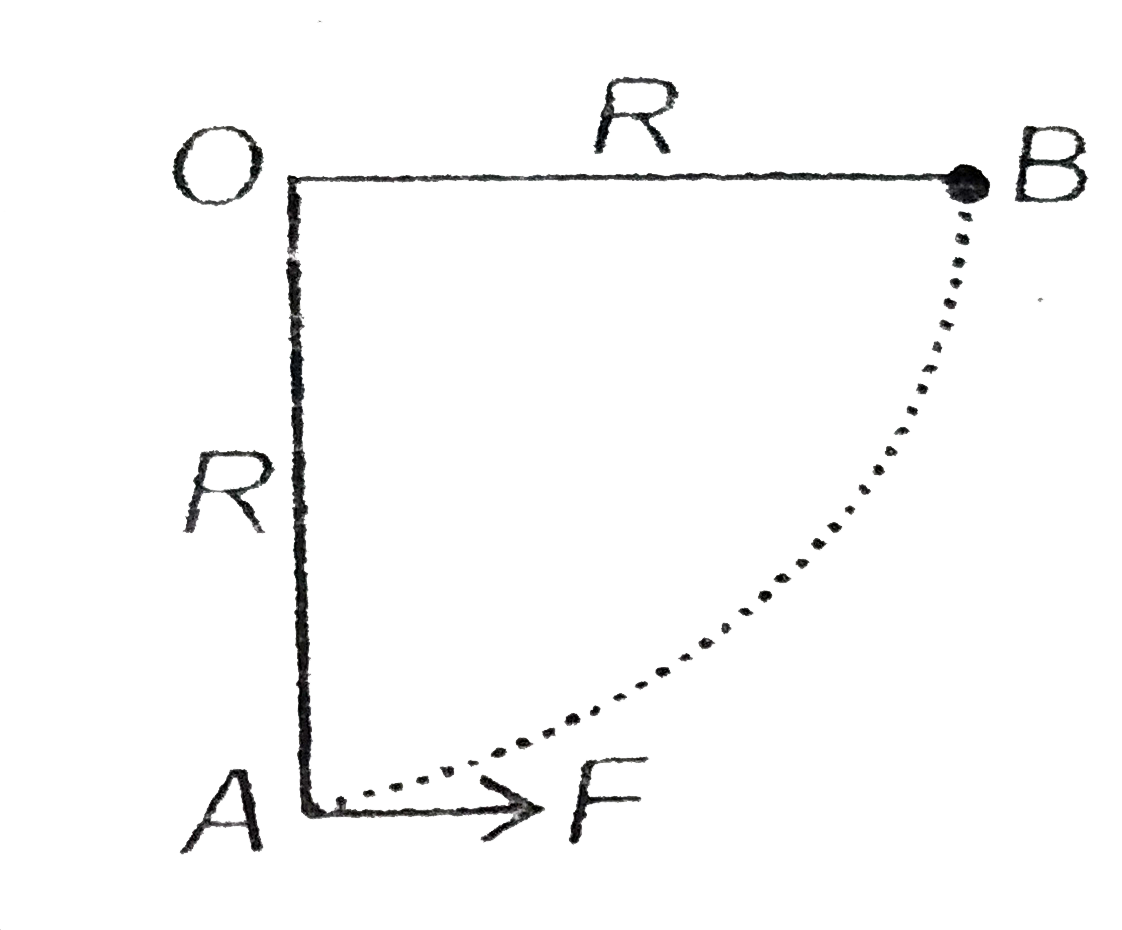The velocity acquired by a mass m in travelling a certain distance d starting from rest under the action of a constant force is directly proportional to :-
√m
Independent of m
1√m
m
The correct Answer is:C
To solve the problem, we need to determine how the velocity acquired by a mass m traveling a distance d under a constant force relates to these variables. Here’s a step-by-step breakdown:
Step 1: Understand the Given Information
We have:
- A mass m starting from rest (initial velocity u=0).
- It is acted upon by a constant force F.
- The distance traveled is d.
Step 2: Determine the Acceleration
Using Newton's second law, the acceleration a of the mass can be expressed as:
a=Fm
Step 3: Use the Third Equation of Motion
The third equation of motion relates the final velocity v, initial velocity u, acceleration a, and distance d:
v2=u2+2ad
Since the initial velocity u=0, this simplifies to:
v2=2ad
Step 4: Substitute for Acceleration
Now, substitute a from Step 2 into the equation:
v2=2(Fm)d
This can be rearranged to:
v2=2Fdm
Step 5: Solve for Velocity
Taking the square root of both sides gives us the expression for velocity:
v=√2Fdm
Step 6: Identify Proportional Relationships
From the equation v=√2Fdm, we can see that:
- v is directly proportional to √F (the force).
- v is directly proportional to √d (the distance).
- v is inversely proportional to √m (the mass).
Conclusion
Thus, the velocity acquired by the mass m in traveling a distance d under a constant force F is directly proportional to √F and √d, and inversely proportional to √m.
Final Answer
The velocity acquired is directly proportional to √F and √d and inversely proportional to √m.
---
We have:
- A mass m starting from rest (initial velocity u=0).
- It is acted upon by a constant force F.
- The distance traveled is d.
Using Newton's second law, the acceleration a of the mass can be expressed as:
a=Fm
The third equation of motion relates the final velocity v, initial velocity u, acceleration a, and distance d:
v2=u2+2ad
Since the initial velocity u=0, this simplifies to:
v2=2ad
Now, substitute a from Step 2 into the equation:
v2=2(Fm)d
This can be rearranged to:
v2=2Fdm
Taking the square root of both sides gives us the expression for velocity:
v=√2Fdm
From the equation v=√2Fdm, we can see that:
- v is directly proportional to √F (the force).
- v is directly proportional to √d (the distance).
- v is inversely proportional to √m (the mass).
Thus, the velocity acquired by the mass m in traveling a distance d under a constant force F is directly proportional to √F and √d, and inversely proportional to √m.
The velocity acquired is directly proportional to √F and √d and inversely proportional to √m.
Topper's Solved these Questions
- NEWTONS LAWS OF MOTIONBOOK - ALLENCHAPTER - NEWTONS LAWS OF MOTIONEXERCISE - EXERCISE-III
28 Videos
- NEWTONS LAWS OF MOTIONBOOK - ALLENCHAPTER - NEWTONS LAWS OF MOTIONEXERCISE - EXERCISE-I
52 Videos
- NEWTON'S LAWS OF MOTION & FRICTIONBOOK - ALLENCHAPTER - NEWTON'S LAWS OF MOTION & FRICTIONEXERCISE - EXERCISE (JA)
4 Videos
- RACEBOOK - ALLENCHAPTER - RACEEXERCISE - Basic Maths (Wave Motion & Dopplers Effect) (Stationary waves & doppler effect, beats)
25 Videos
Similar Questions
Knowledge Check
The KE acquired by a mass m in travelling a certain distance s, starting from rest, under the action of a constant force is directly proportional to :
AmB√mC1√mDnone of theseThe KE acquired by a mass m in travelling a certain distance s, starting from rest, under the action of a constant force is directly proportional to :
A√mBIndependent of mC1/√mDmThe K.E. acquired by a mass m in travelling a certain distance d, starting from rest, under the action of a constant force is directly propotional to
AmB√mC1√mDnone of the above
The kinetic energy acquired by a mass (m) in traveling distance starting from rest under the action of constant force is directly proportional to:
View SolutionThe kinetic energy acquired by a mass m travelling a certain distance d, starting from rest, under the action of a force F such that the force F is directly proportional to t is
View SolutionThe kinetic energy acquired by a body of mass m in travelling a certain distance starting from rest, under a constant force is
View SolutionThe kinetic energy acquired by a mass m staring from rest under the action of a force F=kt is :
View SolutionThe velocity 'v' reached by a car of mass 'm' on moving a certain distance from the starting point when driven by a motor with constant power 'P' is such that
View Solution

